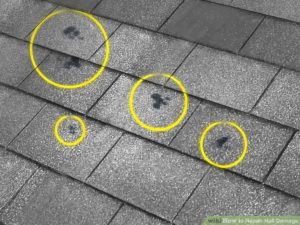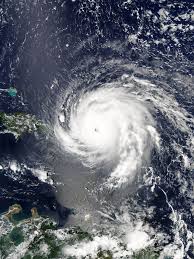Enduring a hail storm can be stressful. Dealing with insurance and knowing what to do is confusing. Below, we have laid out four steps to filing a hail damage claim.
Steps to Filing a Hail Damage Claim

1. Gather Information Right After the Hail Storm
Right after the storm, you need to make a note of the day and time when the hail storm occurred. This is important because the insurance company will want to make sure that it coincides with reports from local weather and public safety authorities.
You will need to take photos of:
- Outside of your home covered with hailstones
- Closeup of hailstones next to a ruler or measuring tape
- Obvious hail damage – such as torn or missing shingles
- Any leaks within the attic
2. Roof Estimate
Before you call your insurance, call a roofing contractor first. You want to make sure that you find a qualified, experienced contractor that has years of experience dealing with hail damage. You will also make sure that they are qualified to repair the type of roofing that is on your home.
Once you find a roofing contractor, discuss your roof repair with them. Show them the photos that you took after the storm. They will need to do an inspection and an assessment of your roofing and the repairs that need to be made. They should outline the areas in chalk that need to be repaired. They should take photos off the damaged areas. At this point, they should explain the extent of the damage, and they may discuss if it may be a better idea to replace your roof. They should offer you an estimate of the work that needs to be done. No repairs should be made at this point.
3. File an Insurance Claim
Once you have a price for your roof repairs, you can call your insurance company.
Before you make the call:
- Find your homeowners insurance policy
- Know your insurance policy number and your deductible
- Organize the facts that you have collected including date/time of storm, size of hailstones, price given in estimate
When you make the call, you will be given a claim number, make a note of that number. You will be assigned a claims adjuster for your roof repairs.
4. Insurance Inspection
Your insurance adjuster will give you a call to schedule a time when they will do the inspection. Make sure to ask them if they would like to see the photos of the damage, you may be able to send it to your adjuster before your inspection. You should have your roofing contractor come to the roofing inspection. This way, your contractor can explain the extent of the damage and their findings during their assessment. Your adjuster will do their own inspection.
After the inspection is over, your adjuster will let you know if your claim has been approved. If it is approved, you can then begin to discuss your roof repairs or replacement with your contractor.
Many times, an insurance company will offer you less than your hail damage claim is worth. We have experience dealing with insurance companies. If you need help to get the full value of your hail claim, please contact us today!




